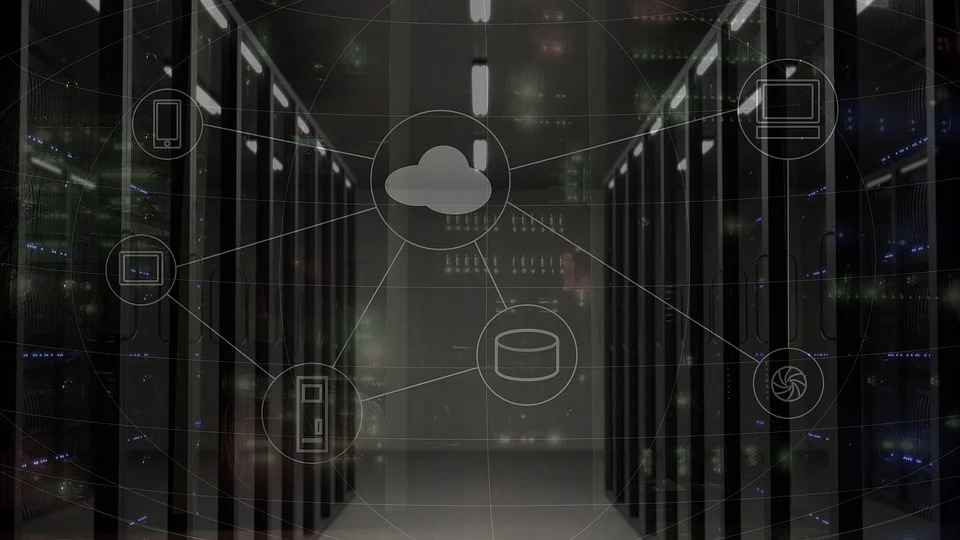Edge computing is transforming the way data is processed and managed, bringing computation and data storage closer to the location where it is needed. This decentralized approach reduces latency, improves efficiency, and enables real-time data processing, making it an ideal solution for various industries in 2025. This comprehensive guide explores the benefits, applications, and future trends of edge computing solutions, providing valuable insights into this groundbreaking technology.
Understanding Edge Computing
What is Edge Computing?
Edge computing involves processing data at the edge of the network, near the source of data generation, rather than relying on centralized cloud data centers. This proximity to data sources reduces the time it takes to process and analyze data, leading to faster decision-making and enhanced performance.
SEO Keywords: edge computing definition, what is edge computing, edge computing technology
How Does Edge Computing Work?
Edge computing deploys edge devices, such as sensors, gateways, and edge servers, to collect and process data locally. These devices perform preliminary data processing and analytics before sending relevant information to the cloud for further analysis and storage. By offloading computation tasks to the edge, organizations can optimize bandwidth usage and reduce dependency on centralized cloud infrastructure.
SEO Keywords: how edge computing works, edge devices, edge data processing
Benefits of Edge Computing Solutions
Reduced Latency
One of the primary advantages of edge computing is reduced latency. By processing data closer to the source, edge computing minimizes the delay associated with data transmission to and from centralized cloud servers. This low-latency approach is crucial for applications that require real-time data processing, such as autonomous vehicles, industrial automation, and augmented reality.
SEO Keywords: edge computing benefits, reduced latency, real-time data processing
Improved Efficiency
Edge computing enhances efficiency by optimizing bandwidth usage and reducing the amount of data transmitted to the cloud. This localized processing minimizes network congestion and lowers operational costs associated with data transfer and storage. As a result, organizations can achieve better performance and cost savings.
SEO Keywords: edge computing efficiency, bandwidth optimization, cost savings with edge computing
Enhanced Security
Processing data locally at the edge improves security by reducing the risk of data breaches and cyberattacks. Sensitive data can be analyzed and stored on edge devices without being transmitted over the internet, minimizing exposure to potential threats. Additionally, edge computing allows for more granular control over data access and protection measures.
SEO Keywords: edge computing security, data protection at the edge, cybersecurity benefits of edge computing
Scalability
Edge computing solutions offer scalability by allowing organizations to deploy and manage edge devices as needed. This flexibility enables businesses to scale their operations and accommodate growing data volumes without overburdening centralized cloud infrastructure. Edge computing also supports diverse use cases, making it adaptable to various industry requirements.
SEO Keywords: edge computing scalability, scalable edge solutions, flexible edge computing
Applications of Edge Computing in 2025
Industrial Automation
Edge computing is revolutionizing industrial automation by enabling real-time monitoring and control of manufacturing processes. Edge devices collect and analyze data from sensors and machines, allowing for predictive maintenance, process optimization, and improved operational efficiency. This localized data processing reduces downtime and enhances productivity in smart factories.
SEO Keywords: edge computing in industrial automation, smart factories, predictive maintenance with edge computing
Autonomous Vehicles
Autonomous vehicles rely on edge computing to process vast amounts of data generated by sensors and cameras in real-time. Edge computing enables low-latency decision-making, ensuring the safety and efficiency of self-driving cars. By processing data locally, autonomous vehicles can quickly respond to changing road conditions and obstacles.
SEO Keywords: edge computing in autonomous vehicles, self-driving cars, real-time data processing in vehicles
Healthcare
In the healthcare industry, edge computing supports remote patient monitoring, telemedicine, and smart medical devices. Edge devices collect and analyze health data in real-time, providing healthcare professionals with actionable insights and enabling timely interventions. This approach improves patient outcomes and enhances the efficiency of healthcare services.
SEO Keywords: edge computing in healthcare, remote patient monitoring, smart medical devices
Retail
Retail businesses leverage edge computing to enhance customer experiences and streamline operations. Edge devices enable real-time inventory management, personalized marketing, and in-store analytics. By processing data locally, retailers can respond quickly to customer needs and optimize store layouts and product placements.
SEO Keywords: edge computing in retail, real-time inventory management, personalized marketing with edge computing
Smart Cities
Edge computing plays a vital role in the development of smart cities by enabling real-time data processing for traffic management, public safety, and environmental monitoring. Edge devices collect data from sensors deployed throughout the city, allowing for efficient resource allocation and improved urban planning. This localized approach enhances the quality of life for residents.
SEO Keywords: edge computing in smart cities, smart city solutions, real-time urban data processing
Future Trends in Edge Computing
Integration with Artificial Intelligence
The integration of edge computing with artificial intelligence (AI) is a significant trend in 2025. Edge AI enables devices to perform complex data analysis and machine learning tasks locally, reducing the need for cloud-based processing. This combination enhances the capabilities of edge devices and supports advanced applications such as facial recognition, natural language processing, and predictive analytics.
SEO Keywords: edge AI, artificial intelligence at the edge, edge computing and machine learning
5G Connectivity
The deployment of 5G networks is accelerating the adoption of edge computing solutions. 5G connectivity provides high-speed, low-latency communication, making it ideal for edge computing applications. The combination of 5G and edge computing enables seamless data transfer and supports the proliferation of IoT devices and smart applications.
SEO Keywords: 5G and edge computing, edge computing with 5G, high-speed connectivity for edge devices
Edge-to-Cloud Continuum
The edge-to-cloud continuum represents the seamless integration of edge and cloud computing environments. This hybrid approach allows organizations to leverage the strengths of both edge and cloud solutions, enabling efficient data processing, storage, and analysis. The edge-to-cloud continuum supports flexible and scalable computing architectures.
SEO Keywords: edge-to-cloud continuum, hybrid edge and cloud computing, integrated computing environments
Edge Security Solutions
As edge computing adoption grows, so does the need for robust security solutions. Edge security focuses on protecting data at the edge through encryption, authentication, and secure communication protocols. In 2025, advancements in edge security technologies are enhancing the protection of sensitive data and preventing cyber threats.
SEO Keywords: edge security solutions, protecting data at the edge, secure edge computing
Environmental Sustainability
Edge computing contributes to environmental sustainability by reducing the energy consumption associated with data transmission and processing. By processing data locally, edge devices minimize the need for extensive data center infrastructure, lowering the overall carbon footprint. Additionally, edge computing supports smart grid management and renewable energy integration.
SEO Keywords: environmental sustainability with edge computing, energy-efficient data processing, green edge computing solutions
Conclusion
Edge computing solutions is revolutionizing data processing and management, offering numerous benefits such as reduced latency, improved efficiency, enhanced security, and scalability. As we move towards 2025, the adoption of edge computing solutions is accelerating across various industries, from industrial automation to healthcare and smart cities. By integrating edge computing with AI, leveraging 5G connectivity, and embracing the edge-to-cloud continuum, organizations can unlock the full potential of this transformative technology. Embracing edge computing not only enhances operational efficiency but also contributes to environmental sustainability, making it a critical component of the future of data processing.

